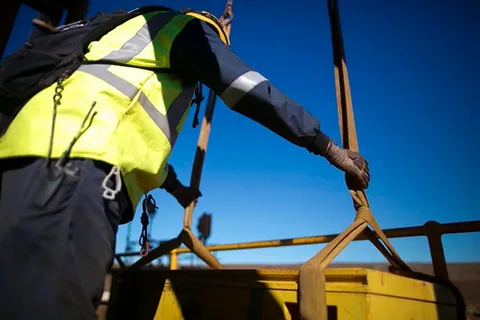Lifting and slinging are critical aspects of material handling in various industries, from construction to manufacturing. Proper training in lifting and slinging techniques is essential to prevent workplace accidents, reduce injuries, and improve overall operational efficiency. In this article, we will explore the importance of lifting and slinging training, key safety practices, and how organizations can implement effective training programs.
Why Lifting and Slinging Training is Crucial
Lifting and slinging are physical tasks that require both skill and knowledge to execute safely. In many industries, workers are tasked with lifting heavy or awkward loads, often using slings and lifting equipment such as cranes and hoists. Incorrect lifting techniques can lead to serious injuries, including strains, sprains, or even more severe accidents like falls or crushed limbs.
Lifting and Slinging Training ensures that workers understand the correct methods of handling loads, the types of equipment available, and how to assess potential hazards. By providing comprehensive training, organizations can reduce the risk of accidents and ensure the safety of their employees.
Key Elements of Lifting and Slinging Training
1. Understanding the Equipment
One of the first components of lifting and slinging training is familiarizing workers with the different types of lifting equipment available. These may include:
- Slings (wire rope, chain, webbing)
- Lifting hooks and shackles
- Cranes and hoists
Training ensures that employees know how to inspect and maintain this equipment, understand load ratings, and use the right equipment for each task. Incorrectly using slings or not inspecting them for wear can result in failure, causing dangerous accidents.
2. Proper Lifting Techniques
Lifting safely requires the right body mechanics and posture to avoid injury. In lifting and slinging training, workers learn how to:
- Lift with the legs, not the back to avoid strain
- Assess the load’s weight and determine if assistance or mechanical lifting aids are needed
- Use correct hand positions when lifting or carrying objects
- Work in pairs when lifting heavy or awkwardly shaped items to distribute the load
Training also emphasizes the importance of clear communication between workers, especially when lifting loads with multiple people or using equipment like cranes.
3. Risk Assessment and Hazard Identification
A key part of lifting and slinging training is teaching workers how to identify potential hazards in their working environment. This includes:
- Uneven surfaces or unstable ground
- Overloaded slings or lifting equipment
- Obstructions or overhead hazards such as power lines
Proper hazard identification and risk assessment help workers avoid common dangers associated with lifting operations.
Implementing Effective Lifting and Slinging Training Programs
For organizations to maximize the benefits of lifting and slinging training, it is essential to implement structured, ongoing programs. Here are a few tips to ensure training is effective:
1. Hands-On Training and Simulations
While theoretical knowledge is important, hands-on experience is crucial in lifting and slinging training. Simulations and practical exercises allow workers to practice their skills in a safe environment, helping them become more confident in applying the techniques they’ve learned.
2. Regular Refresher Courses
Lifting and slinging techniques may need to be updated over time due to changes in equipment or regulations. Regular refresher courses help ensure that employees stay up-to-date with the latest safety standards and best practices.
3. Encouraging Safety Culture
An essential part of lifting and slinging training is fostering a safety-first mindset across the organization. Workers should be encouraged to report any safety concerns or potential hazards, and management should provide support for continuous improvement.
Conclusion
Lifting and slinging training is an essential part of ensuring workplace safety and improving productivity in environments where heavy lifting is a routine task. By investing in comprehensive lifting and slinging training, organizations can protect their workers from injury, reduce costly accidents, and create a safer, more efficient work environment.

